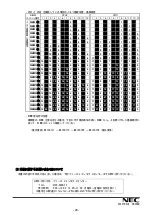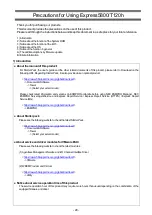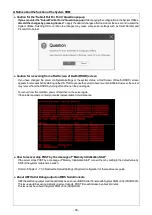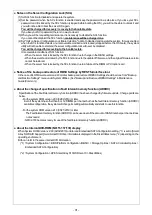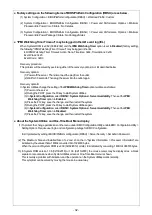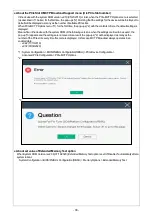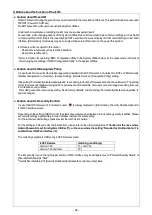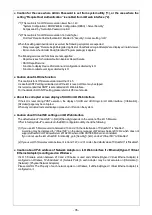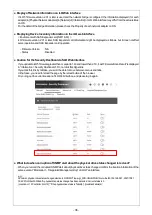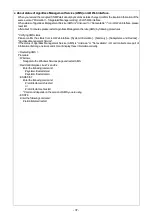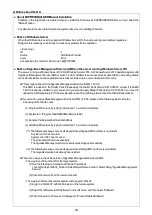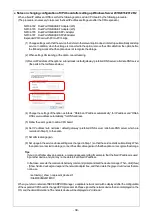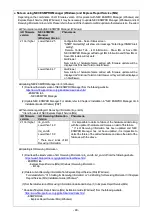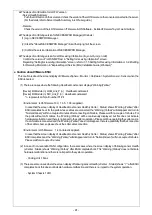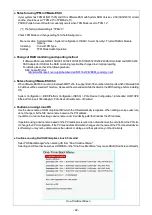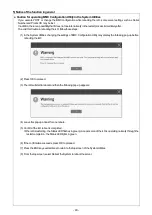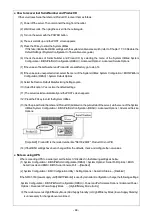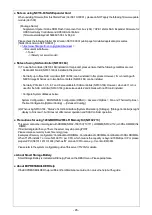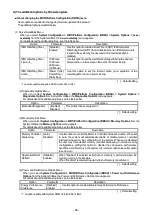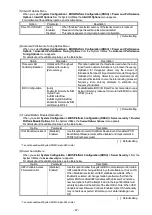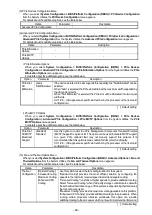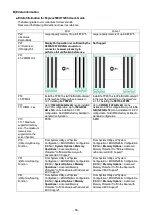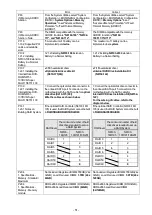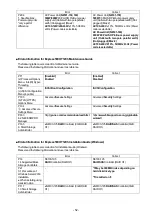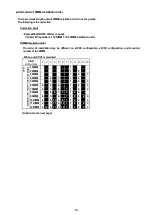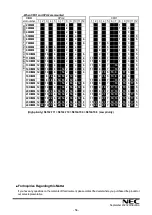
- 42 -
● Notes for using TPM in VMware ESXi
If your system has TPM kit (N8115-35) and OS is VMware ESXi with System ROM Version v 2.00 (02/02/2019) or later
and the, should be used "TPM 2.0" in TPM Mode.(*1).
PSOD (Purple Screen of Death) occasionally occurs when TPM Mode is set to “TPM 1.2”.
(*1) The factory default setting is “TPM 2.0”.
Check TPM Mode and change setting from the following menu.
Menu Location : System Utilities > System Configuration > RBSU > Server Security > Trusted Platform Module
Options
Indicating
: Current TPM Type
Settings
: TPM Mode Switch Operation
● Change of RAID monitoring and reporting method
If VMware ESXi uses N8103-189/190/191/192/193/194/195/196/201/237/238/240 RAID controller and N8103-239
SSD Adapter for OS Boot, the RAID monitoring report will be changed to snmp trap reporting.
For details, please check the following website.
NEC Support Portal
http://www.58support.nec.co.jp/global/download/N8103-239/WBEM_uninstall_en.pdf
● Notes of using VMware ESXi 6.0
When VMware ESXi 6.0 is used on Express5800/T120h, the upper limit of the number of LAN ports which VMware ESXi
6.0 defines will be exceeded. Therefore, please set the embedded LAN to Disabled in the BIOS settings, before installing
OS.
System Configuration > BIOS/Platform Configuration (RBSU) > PCIe Device Configuration > Embedded LOM1:HPE
Ethernet 1Gb 4-port 369i Adapter > PCIe Device Disable Auto -> Disabled
● Cautions on using Linux OS
Use the device name of LOM or optional NIC which the OS automatically recognizes. When adding a unique udev rule,
do not change or fix the NIC device name based on the PCI address.
In addition, do not use the storage device name under /dev/disk/by-path/ that includes the PCI address.
If operation using a device name based on the PCI address is required, do not add/remove the card to/from the PCI slot,
or change the CPU configuration. If the PCI bus address information changes and the name of the PCI-connected device
is affected, you may not be able to access the network or storage, and the system may not boot normally.
● Cautions on using Red Hat Enterprise Linux 8.5 or earlier
Select "OS Boot Manager" when booting OS from "One-Time Boot Menu".
Selecting an OS boot device such as HDD/SSD on the "One-Time Boot Menu" may cause RSoD (Red Screen of Death).
One-Time Boot Screen

